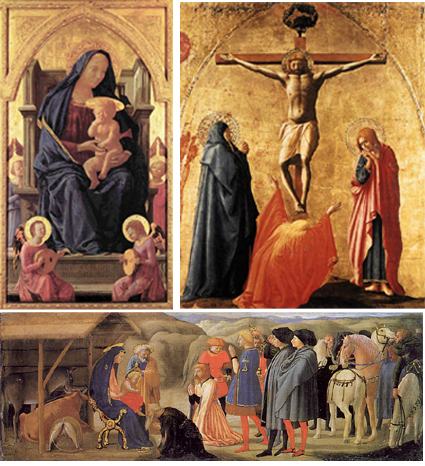On the six hundredth anniversary of the birth of Masaccio, the greatest painter of early fifteenth-century Florence, the National Gallery has – a remarkable feat – managed to reunite all of the surviving scattered pieces of his so-called “Pisa Polyptych”. The jigsaw puzzle of Masaccio’s long-since dismembered altarpiece will be put together as accurately as possible and placed on display ten days from now. For the first time for hundreds of years, it will be possible to see this celebrated but broken-boned masterpiece of Italian Renaissance art in a condition approaching that intended by its creator.
Masaccio’s many-panelled altarpiece was probably split up around the end of the sixteenth century when the church of the Carmine in Pisa, which housed it, was remodelled. The National Gallery owns the large central panel of the Virgin and Child; three small predella panels will be arriving in London from the Gemaldegalerie in Berlin; the Crucifixion will come from the Museo di Capodimonte in Naples; while other surviving bits and pieces will be travelling variously from Berlin, Pisa and Malibu.
Considerable losses to the middle tier mean that the original effect of the altarpiece as a whole can still only be imagined. But it is possible to reconstruct its principal vertical axis, as shown here, with The Virgin and Child Enthroned at the centre, above the small predella panel of the Magi, and crowned by the Crucifixion. Christ adored at his birth is surmounted by Christ on Mary’s lap, solemnly sucking at a bunch of grapes, the juices of which are a literal foretaste of His Passion, symbolising the eucharistic wine of the Mass and the blood that he will shed for mankind. This group is in turn surmounted by Christ on the cross, all the pain of whose impassive suffering seems...

ITP 72: Parts of The Pisa Polyptych by Masaccio
02-09-2001

